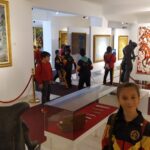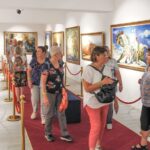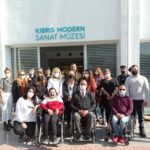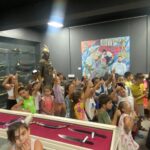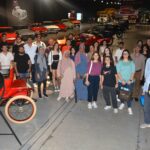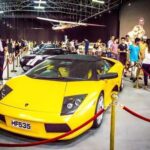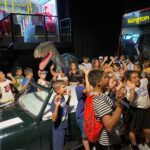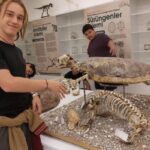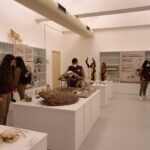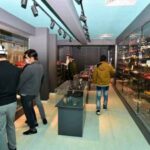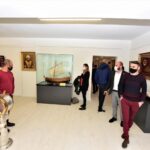All of our museums that aim to integrate and endear art, history, and cultural heritage to the community are open to the public. Our museums provide free services to students attending schools under the Near East Organisation and the people of the Turkish Republic of Northern Cyprus (TRNC).
The most important element that binds modern society together is culture. Therefore, what ensures the continuity of culture's relationship with society? The answer to this question helps us grasp the true meaning of art and museum practices.
The most crucial condition for defining a nation is to have a common history and culture. The key to possessing these values is to create a common memory. To better understand this, let's scale it down and consider a family. One of the most important things that bind family members is shared memories. Events experienced and the common reactions to them create a connection between individuals. The most symbolic place where this connection is most visible is family albums. For many families, the reason family albums emerge and the past is revived with photographs during gatherings is that old photos act as bridges between family members and shared memories. Another aspect of being a family is the aspiration to build a common future. What truly defines a family is the hope and effort to move towards a common future, formed by the bonds created by a shared past.
This situation is also applicable to communities and nations. In this context, the photo albums of societies are museums. Museums are magical places where history conveyed through words is passed on to the present through displayed objects. Likewise, the exhibition of works produced today and their creation of a love for art in society represent the continuation of a common cultural creation, which means passing today's culture to the future.
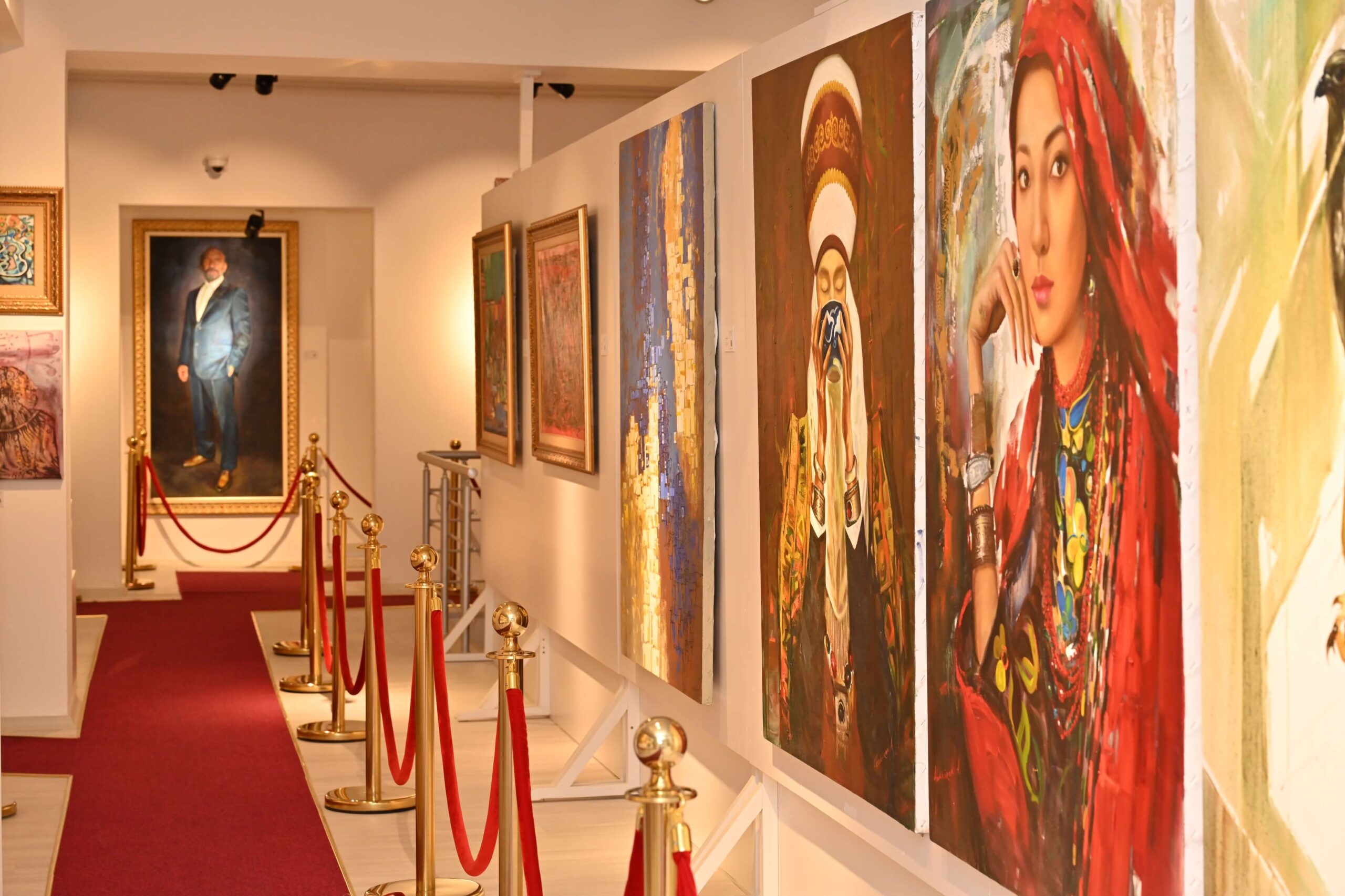
Dr. Suat İrfan Günsel, the Founding Rector of Near East University, says, "Educational institutions are the looms of society's fabric." With an accumulated experience of 43 years following this approach, Near East University aims to not only provide contemporary education to Turkish students but also to students from 143 different countries, fostering individuals who are multicultural yet preserve their own culture and consider themselves global citizens. In other words, Near East University continues its educational mission as a "loom" not only for the Turkish Cypriot community but also for global societies. While pursuing this goal, its greatest inspiration comes from the community and the geography to which it belongs. However, they are aware that this vision cannot be achieved solely by meeting the requirements of the time and providing high-quality education and facilities. Therefore, as they transform into one of the most well-equipped universities in the world in academic, health, technological, and social aspects, they also continue to create a vibrant, productive, and culture-nurturing environment for the community through the museums they have established.
Visitors to the campus of Near East University will know that it resembles a living museum, adorned with numerous sculptures in outdoor spaces and paintings on the walls of indoor areas. However, these artworks are just a small reflection of Near East University's comprehensive museum vision. Indeed, the Near East University campus is also home to some of the most important private museums in Cyprus.
With the establishment of the Cyprus Museum of Modern Art, Near East University has brought significant vibrancy to the culture and art scene of the Turkish Republic of Northern Cyprus (TRNC). Near East University aims to make history and art an integral part of community life through museums such as the Cyprus Car Museum, the Lefkosa Walled City Museum, the Günsel Art Museum, the Günsel Office Museum, the Cyprus Art Museum, the Herbarium and Natural History Museum, the Maritime History Museum, the Knife and Sword Museum, and the Turkish Cypriot National History Museum. The museums established within Near East University foster a valuable cultural heritage that shapes the future with works from all fields of contemporary art. Additionally, the university's collections, which include classic cars, historical artifacts that reflect the national culture of TRNC, thousands of plant and animal species, as well as fossils and remnants that shed light on the geology of Cyprus, span a wide spectrum, preserving the history of Cyprus and the world to strengthen the community's connection to its past.
All of our museums, which aim to integrate art with the public and foster a love for art among the public, are open to the public and provide free services to students attending schools under the Eastern Mediterranean Formation and the TRNC community. The Lefkosa Walled City Museum within the Cyprus Museum of Modern Art is open six days a week, except on Sundays, and the Cyprus Museum of Modern Art, the Cyprus Car Museum, the Herbarium and Natural History Museum, and the Günsel Art Museum are open from 9:00 AM to 5:00 PM six days a week, except on Mondays.
Heart of Contemporary Art Cyprus Museum of Modern Arts
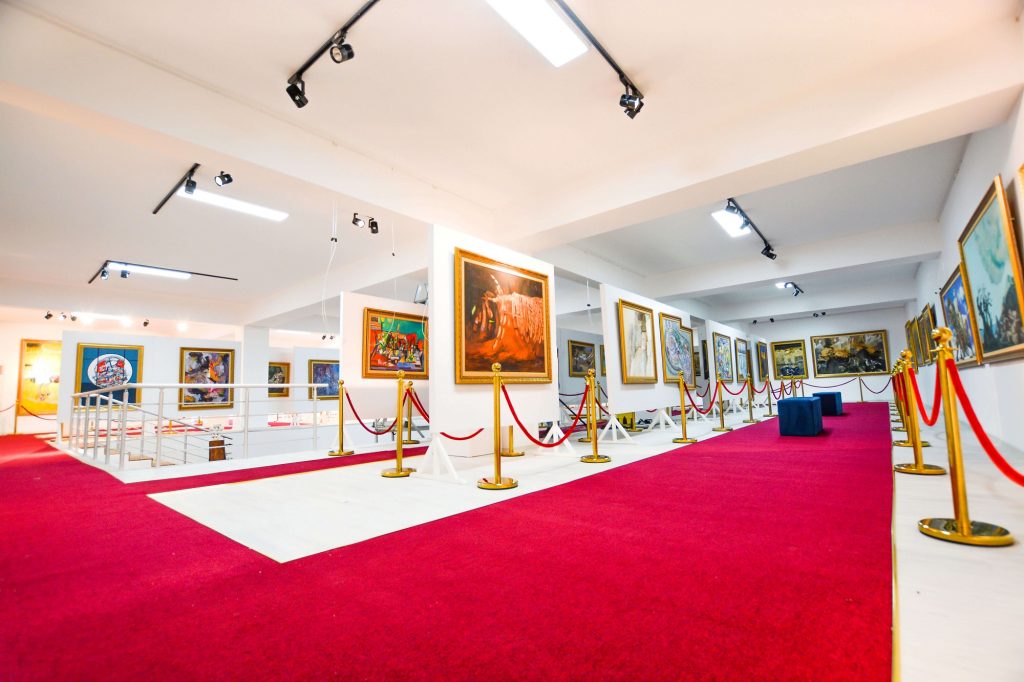
The Cyprus Museum of Modern Art, officially opened on September 27, 2018, has the distinction of not only being the largest contemporary art museum in Cyprus but also in the region, with over 37,000 works of art. The museum boasts a rich collection of paintings and sculptures from 14 Turkic states. It represents a wide range of styles, schools, and artistic approaches, reflecting different periods of artists from countries including Turkey, Azerbaijan, Kazakhstan, Kyrgyzstan, Uzbekistan, Turkmenistan, Gagauzia, Tatarstan, Bashkortostan, Dagestan, Altai Republic, and Tuva Republic. Hosting the works of nearly 3,000 artists to date, the Cyprus Museum of Modern Art serves as a center where Turkish culture intersects with the world.
The Cyprus Museum of Modern Art houses a diverse range of artworks, including paintings and drawings created using techniques such as acrylic, oil paint, spray paint, airbrush, mixed media, ink on silk, as well as stained glass, printmaking, wood and woodcarving, marble and ceramic sculpture, clay modeling, gypsum, bronze sculptures, and handcrafted knife-making processes. Notably, the museum entrance features acrylic handcrafted visuals on the ceiling, depicting historical and cultural details related to Turkish states. Furthermore, the museum houses several valuable collections, such as the Paşabahçe Glass Collection, consisting of approximately 223 unique pieces. It also includes the Coin Collection, comprising 649 pieces from various countries and periods, and the Stamp Collection, with nearly 300 stamps from various countries and periods.
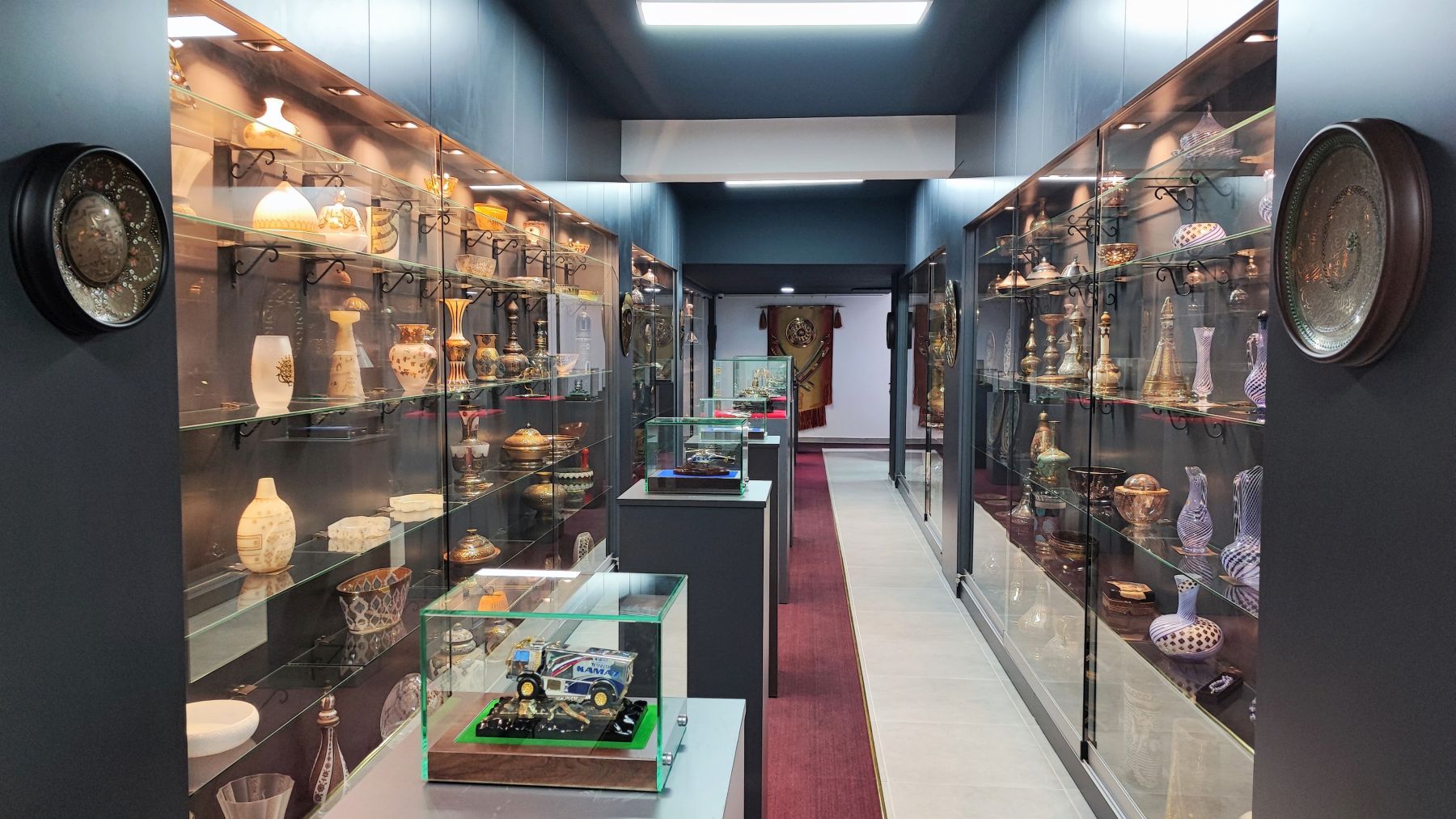
In addition to regularly displayed artworks, the Cyprus Museum of Modern Art hosts exhibitions, seminars, and art workshops, making contemporary art an integral part of daily life in the community. In this respect, the Cyprus Museum of Modern Art, by connecting the past with the present and the future, creates a significant cultural legacy. The museum also plays an active role in promoting Turkish Cypriot art to the country and the world, offering our local artists the opportunity to showcase the art they create.
The Cyprus Museum of Modern Art is now located in a building right across from the Cyprus Car Museum. The new museum building, constructed with unique and modern architecture, stands as a work of art in itself, reflecting the founding philosophy of the Cyprus Museum of Modern Art. The new building of the museum is designed in the shape of a hand, surrounding the historic Rectorate building of Near East University. While the building symbolizes the present and the future, the central rectorate building it encompasses represents respect for the past.
Cyprus Car Museum; The Past and Future of the Automobile
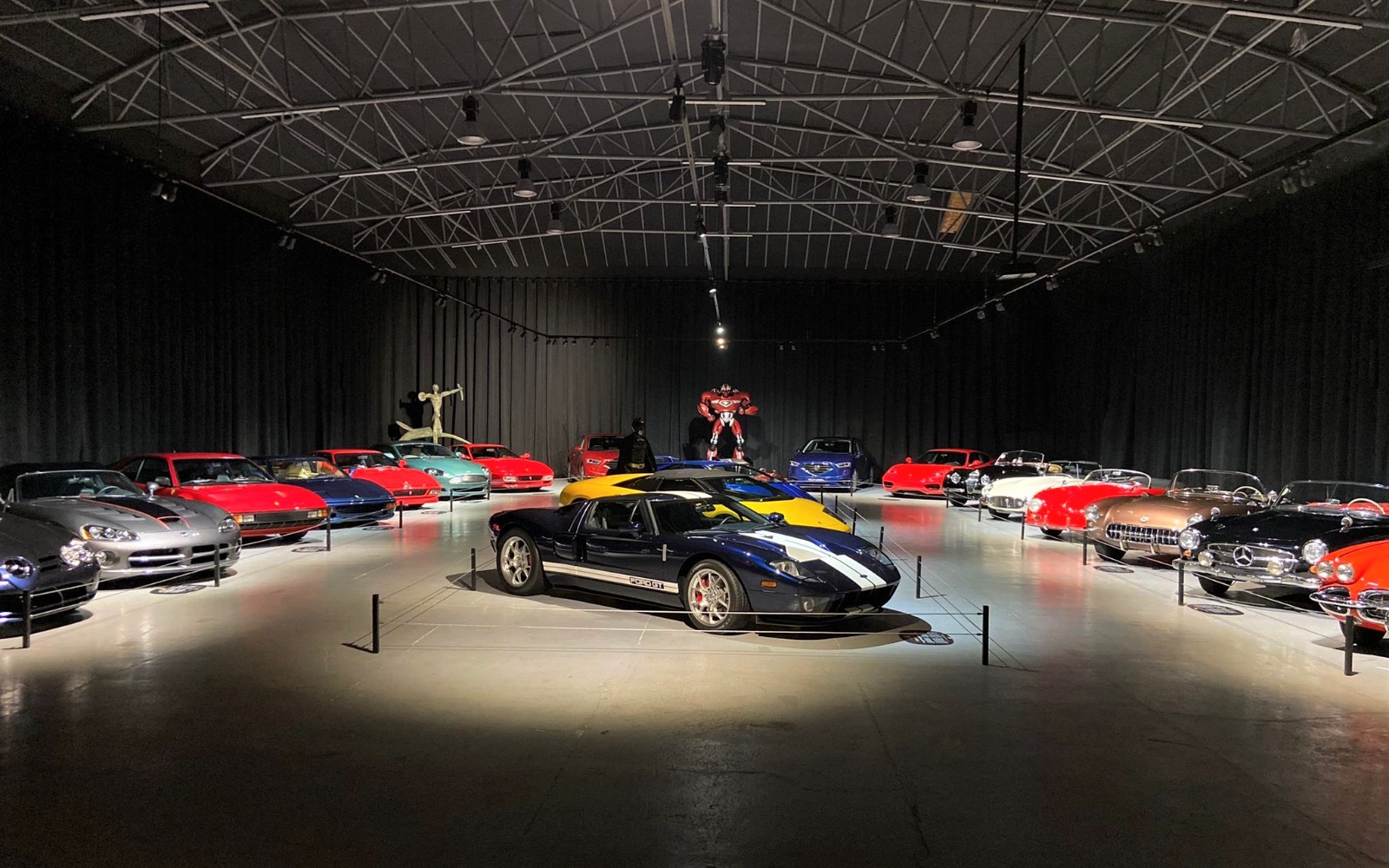
One of the most popular museums located on the Near East University campus is the Cyprus Car Museum, which is the country's only classic car museum. With its rich collection, it showcases the development and history of the modern world through the evolution of automobiles. The oldest vehicle on display in the museum is a 1899 model Crestmobile. This vehicle, which is unique in the world, takes visitors on a journey through a time tunnel, featuring cars from every era spanning from the early 1900s to the 2000s, totaling over 100 years of history.
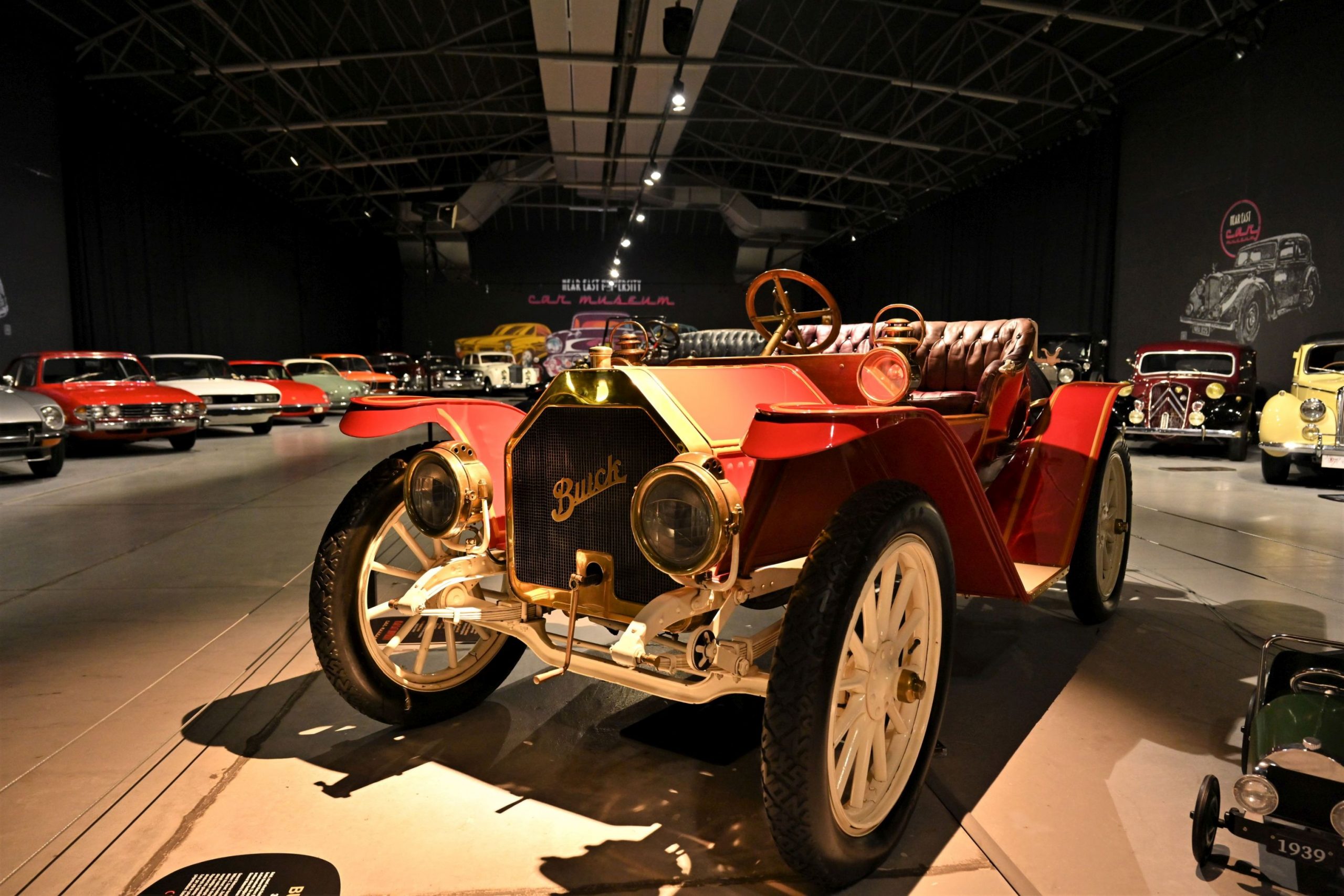
In the museum, you can trace the journeys of iconic brands like Mercedes, Ford, BMW, and others, from their first models to the present day. The museum features the world's first produced cars and the last remaining examples of those early models. Alongside classic vehicles like the 1899 Model Crestmobile, 1903 Model Wolseley, and 1909 Model Buick, the museum also showcases legendary sports cars that have exceeded the 300 km/h speed limit, such as the Jaguar, Lamborghini Murcielago Roadster, and Dodge Viper SRT10 Final Edition, which have left a mark in automotive history. Additionally, the museum's model car collection is also quite popular among visitors.
One of the most special artifacts in the Cyprus Car Museum is the official vehicle gifted to Dr. Fazıl Küçük, the leader of the Turkish Cypriot community, during his tenure as the Vice President of the Republic of Cyprus, by Queen Elizabeth II of the United Kingdom.
Herbarium and Natural History Museum
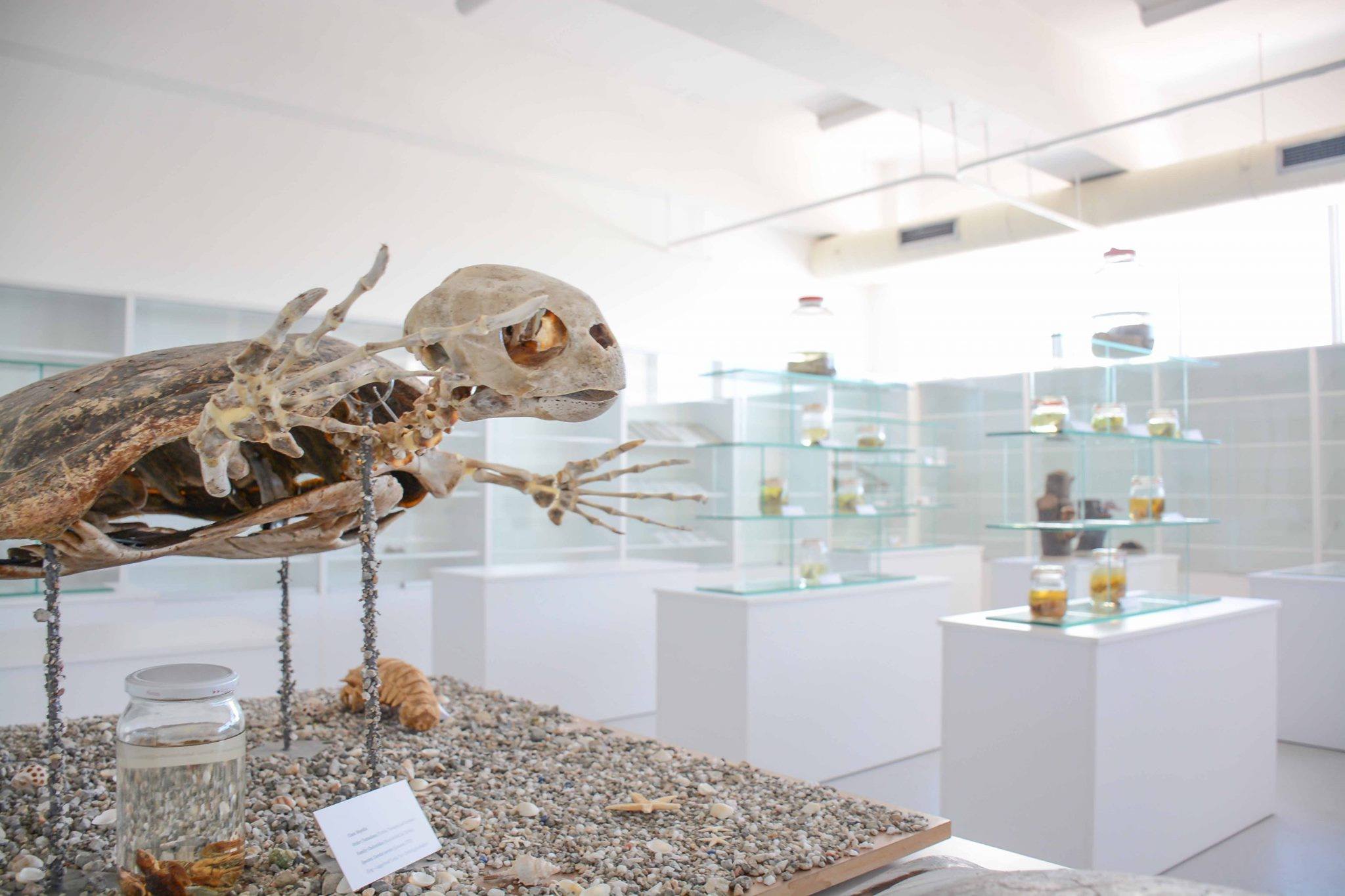
One of the most significant factors that shape a society's culture and traditions is the characteristics of the geographical area it inhabits. Knowing, seeing, tracking the changes and transformations, and being aware of their uniqueness are essential requirements for a living culture. The Herbarium and Natural History Museum, an open area for visits on the Near East University campus, makes the natural history of Cyprus tangible and visible. Reflecting the scientific accumulation of Near East University, the museum showcases approximately 11,000 different plant specimens, representing around 1,600 plant species found in Cyprus, as well as various types of fungi, insect species, different reptile species, marine life, and materials related to the geology of Cyprus. The museum, located in the Near East University Faculty of Pharmacy building, also features 140 plant species specific to Cyprus and 19 plant species unique to the Besparmak Mountains in Northern Cyprus. The collection includes 106 different groups of mushrooms, 250 types of algae, 23 reptile species, insect collections belonging to various taxonomic orders, and samples of 250-million-year-old limestone from the Besparmak Mountains and fossilized trees dating back 220 million years. The museum provides new opportunities and perspectives for scientific research in fields such as biology, pharmacy, medicine, pharmacology, forestry, and food engineering.
Art is in the City! Walled City Museum
Near East University, believing that through art, it can create a cultural environment that serves as a strong bridge between a society's past and future, brought art to the historic center of Nicosia with the opening of the "Walled City Museum." The "Walled City Museum," initiated by the Günsel Family, was opened to visitors during the Republic Day week on November 15.
Following the opening of the "Günsel Art Museum" in the Dereboyu area in February 2020, the "Walled City Museum" is the second museum established by Near East University in the heart of Nicosia. The art and cultural environment created by the "Walled City Museum" in the capital city serves as a meeting point for the cultural identity of Cyprus with the national and international art scene. The museum exhibits a wide range of works, covering various branches of visual arts, including oil and acrylic paintings, original prints, engravings, linocuts, screen prints, lithographs, woodcut prints, sculptures, busts, silicon realistic sculptures, photographs, films, and ceramics, catering to art enthusiasts. Additionally, the world's largest 10-meter artwork named "Nevruz," created by Kazakh artist Orazbek Yassenbayev using ink on silk, is also displayed here.
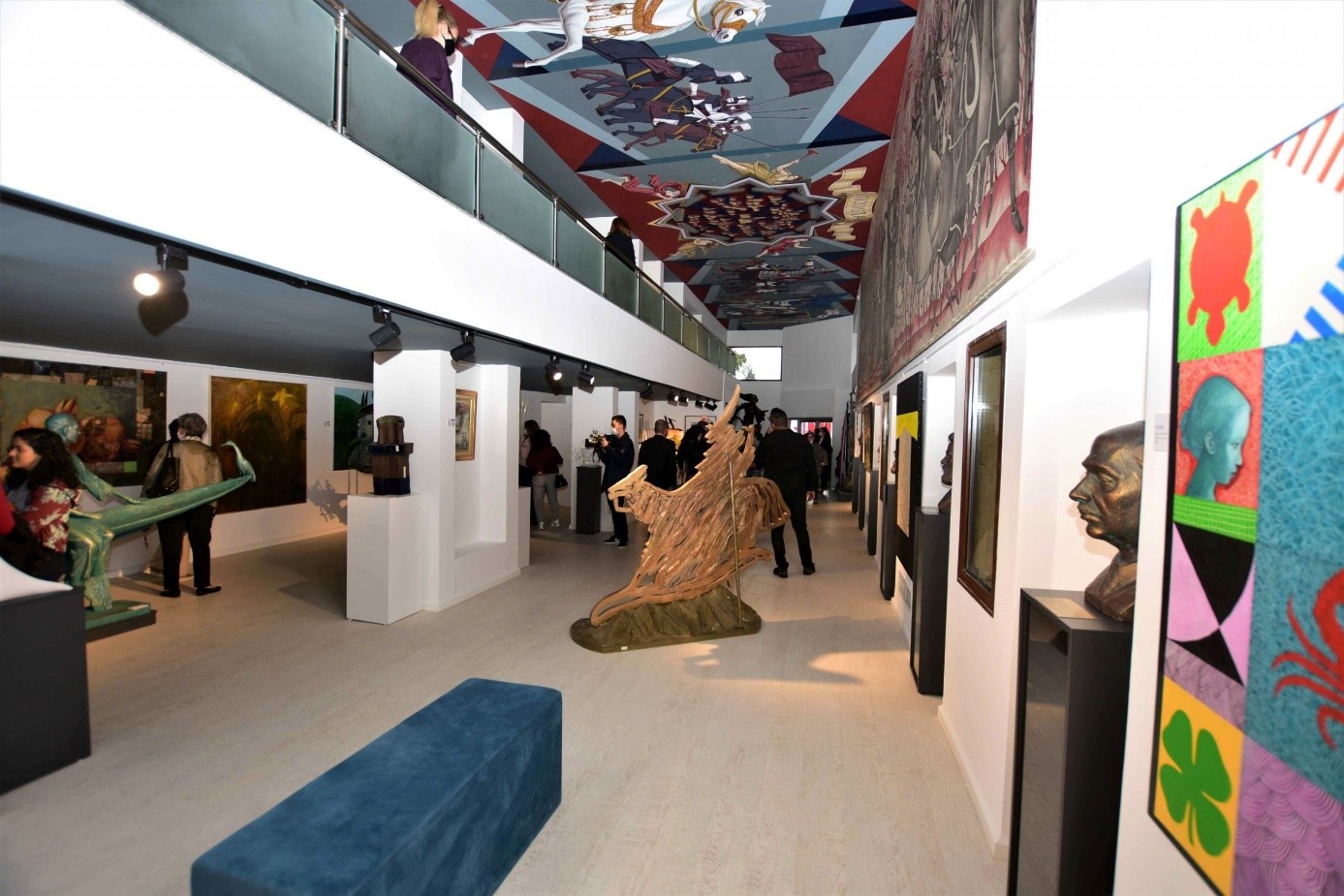
The museum showcases a plethora of materials related to the social, cultural, and political history of Nicosia. It also features a model car collection, and a special collection of Karagöz and Hacivat artworks donated to the museum by Cypriot artist Mehmet Göktuğ. Designed as a living museum with temporary and permanent exhibitions, the "Walled City Museum" aims to become a permanent destination for art enthusiasts and culture enthusiasts. The museum's interior design offers a unique visual spectacle, with its ceilings adorned with gold leaf detailing depicting various historical events, including the Ottoman conquest of Nicosia, the arrival of the British in Larnaca, and the events surrounding the July 20, 1974 Peace Operation.,
Günsel Art Museum
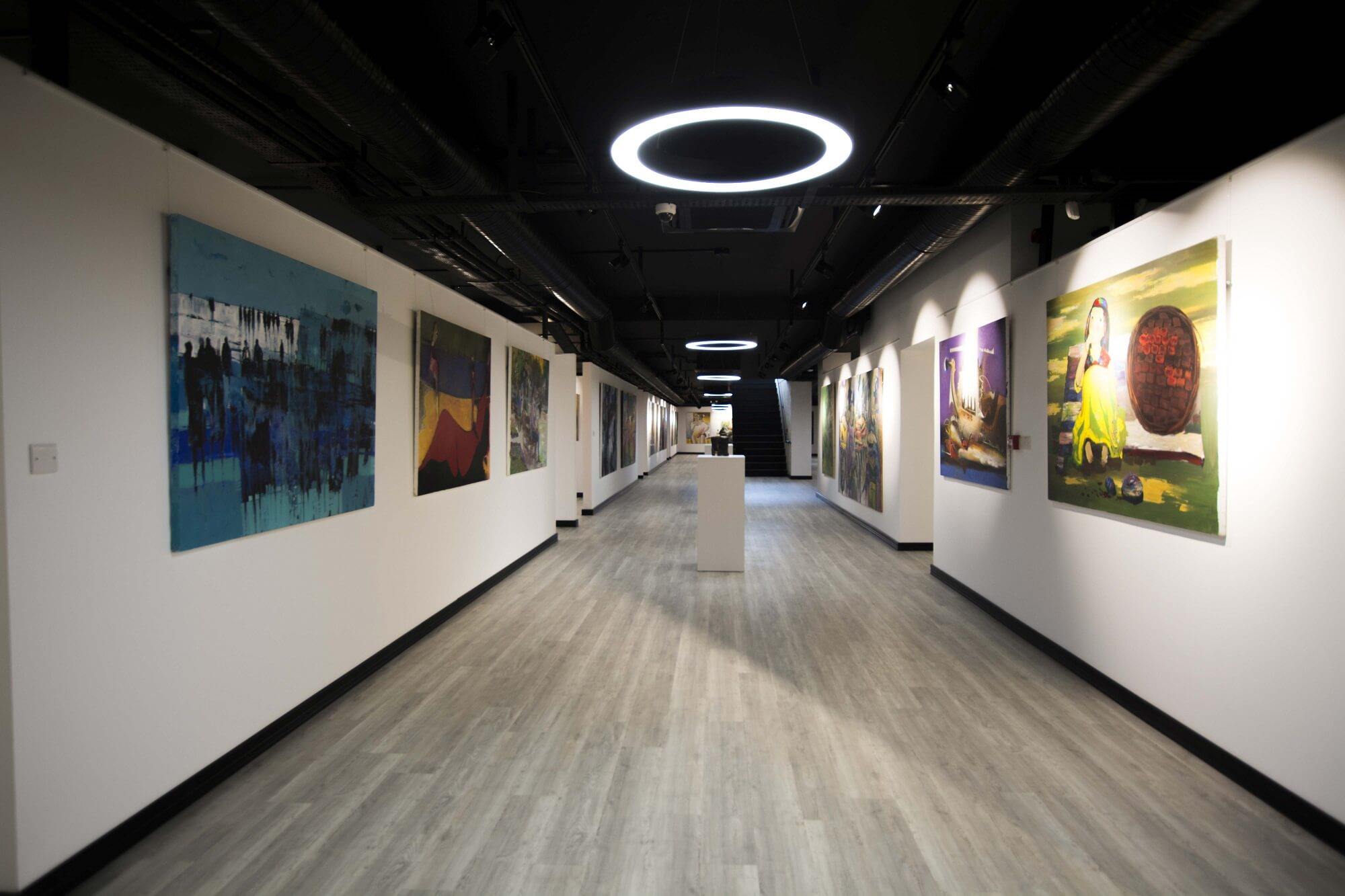
The "Günsel Art Museum" is one of the museums created by the "Günsel" family, which places importance on community unity and brings together tradition, identity, cultural intersections, fusion, and art. The museum, bearing the slogan "Art is in Our Foundation!", opened its doors in 2019 as a modern and contemporary museum dedicated to the first indigenous and national car of our country, "Günsel."
Established to share the artistic creativity and cultural identity of the Turkish Republic of Northern Cyprus with the national and international art scene, the Günsel Art Museum collects, preserves, exhibits, and documents modern and contemporary art works with international influences and directions. The museum exclusively displays the works of artists who have received awards within the framework of the Cyprus Museum of Modern Art project. It serves as a bridge for sharing the cultural identity of Northern Cyprus with the international art scene and supports artists in their creative endeavors and international collaborations. With a mission to make art easily accessible to the masses, the Günsel Art Museum aims to reach art enthusiasts of all ages and backgrounds. The museum's collections and exhibitions are designed to foster a love for art among visitors from all walks of life and actively engage them in the world of art.
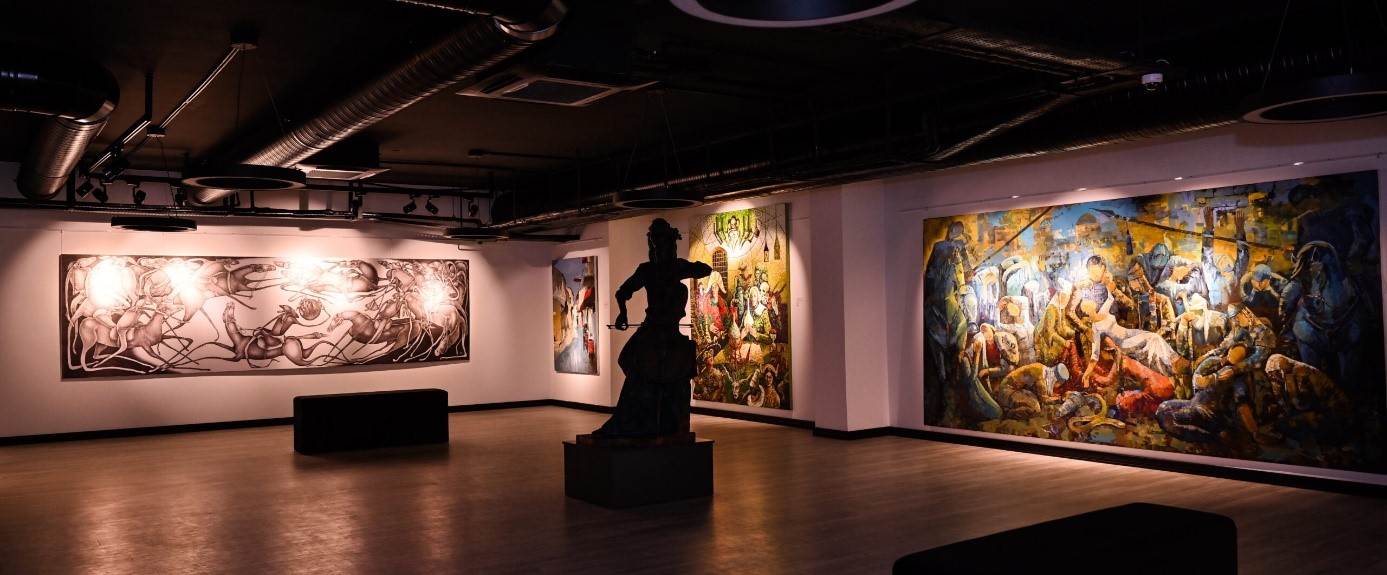
Located on the vibrant Dereboyu Street in the capital city of Nicosia, the Günsel Art Museum covers a total area of 1,100 square meters. It was established in honor of our country's first indigenous and national car, "GÜNSEL," and shares the same space as the "GÜNSEL Promotion Office" in Dereboyu. The museum features 15 gallery areas and houses only the works of contemporary artists who have received awards in recent times, including paintings, ceramics, and sculptures, in both temporary and permanent exhibition halls, as well as an art shop, thus actively contributing to cultural activities.
